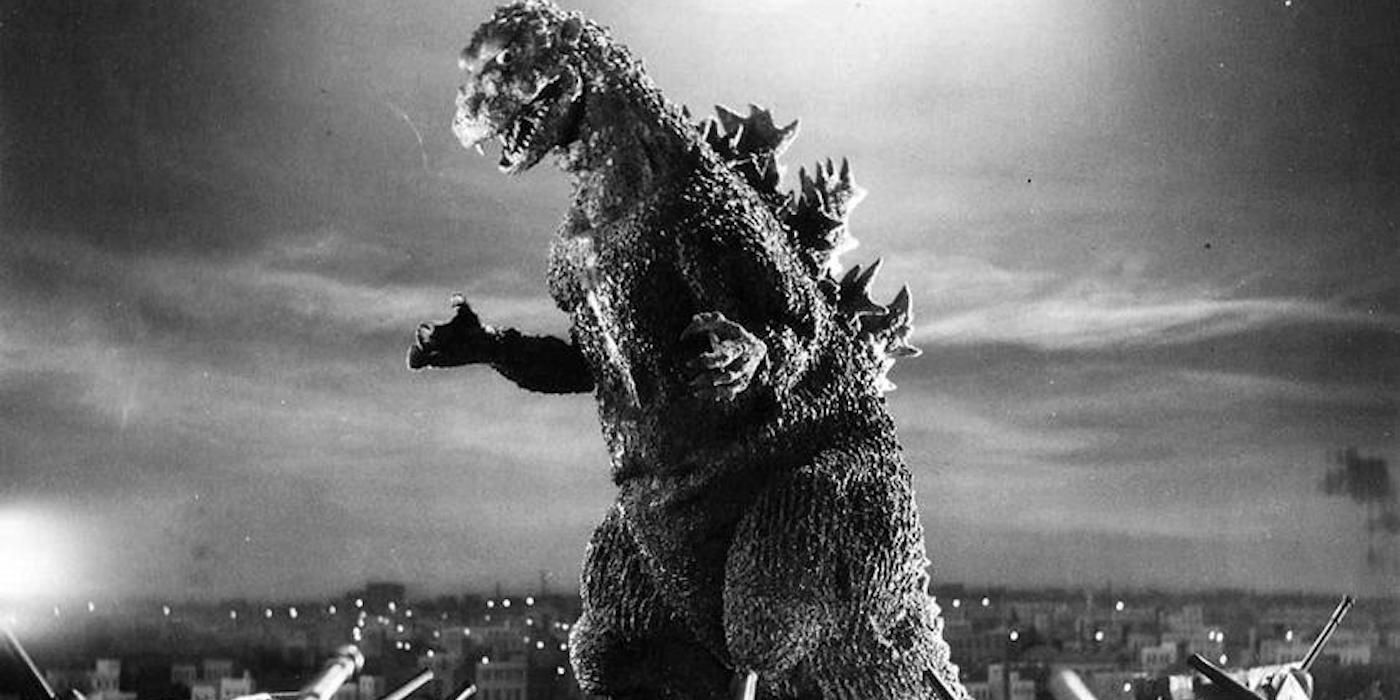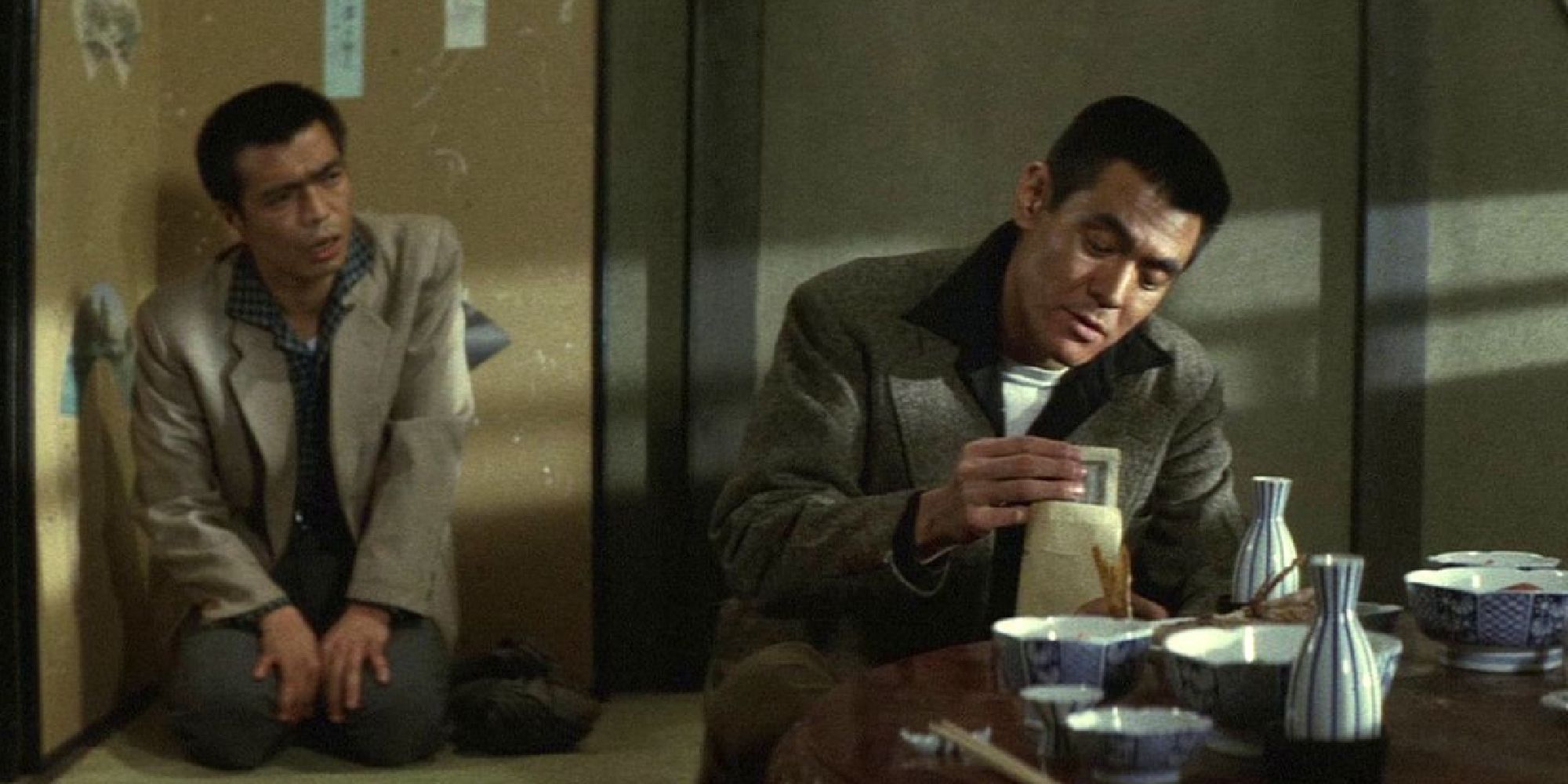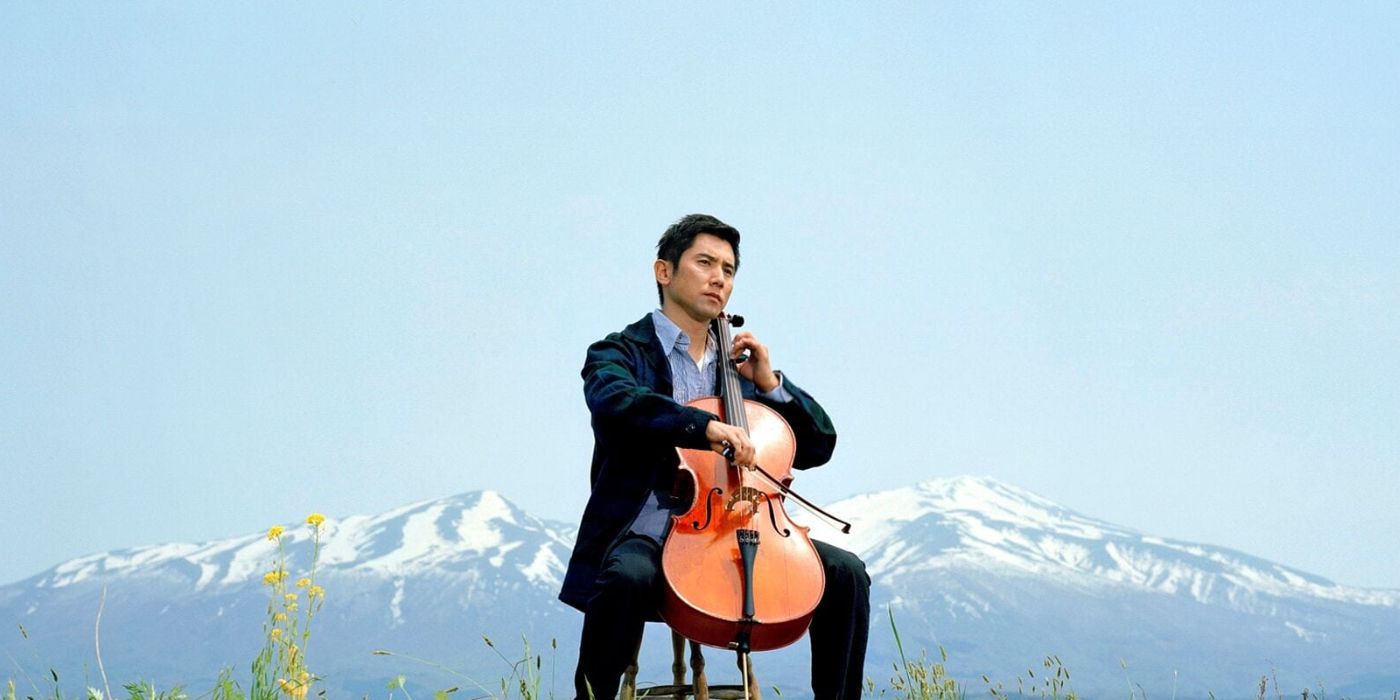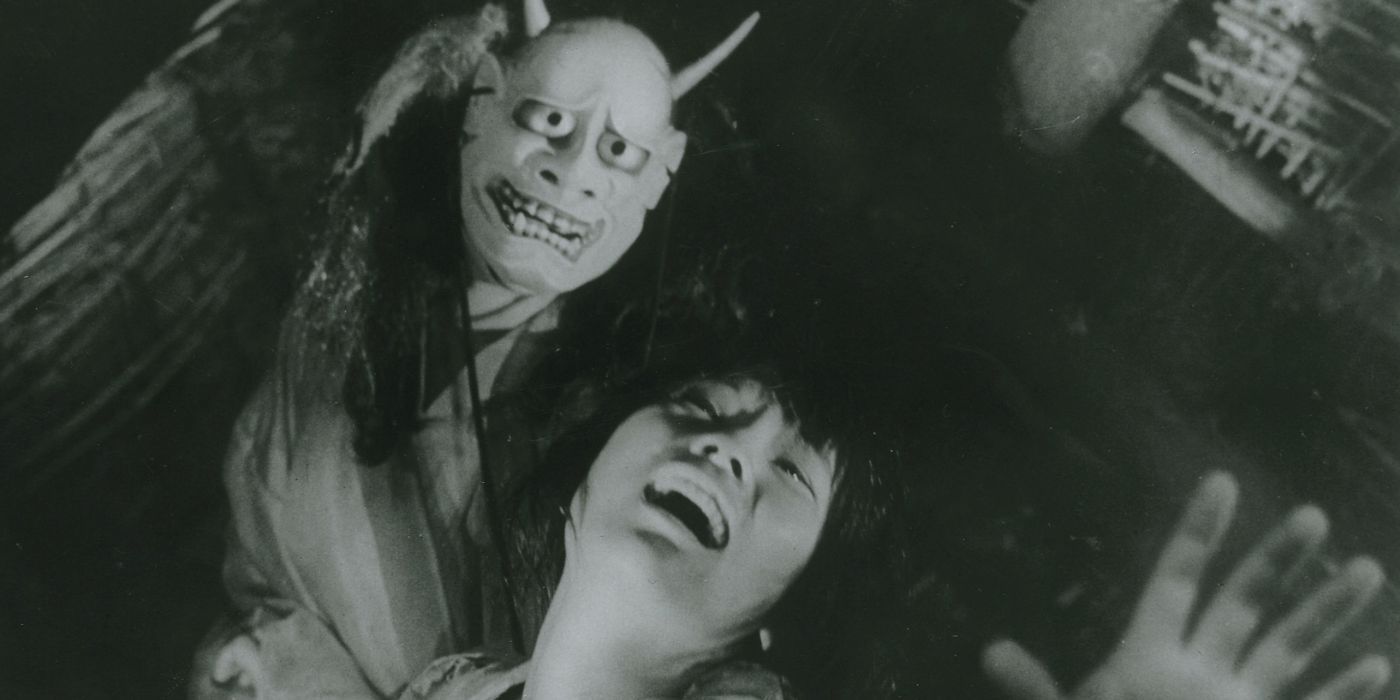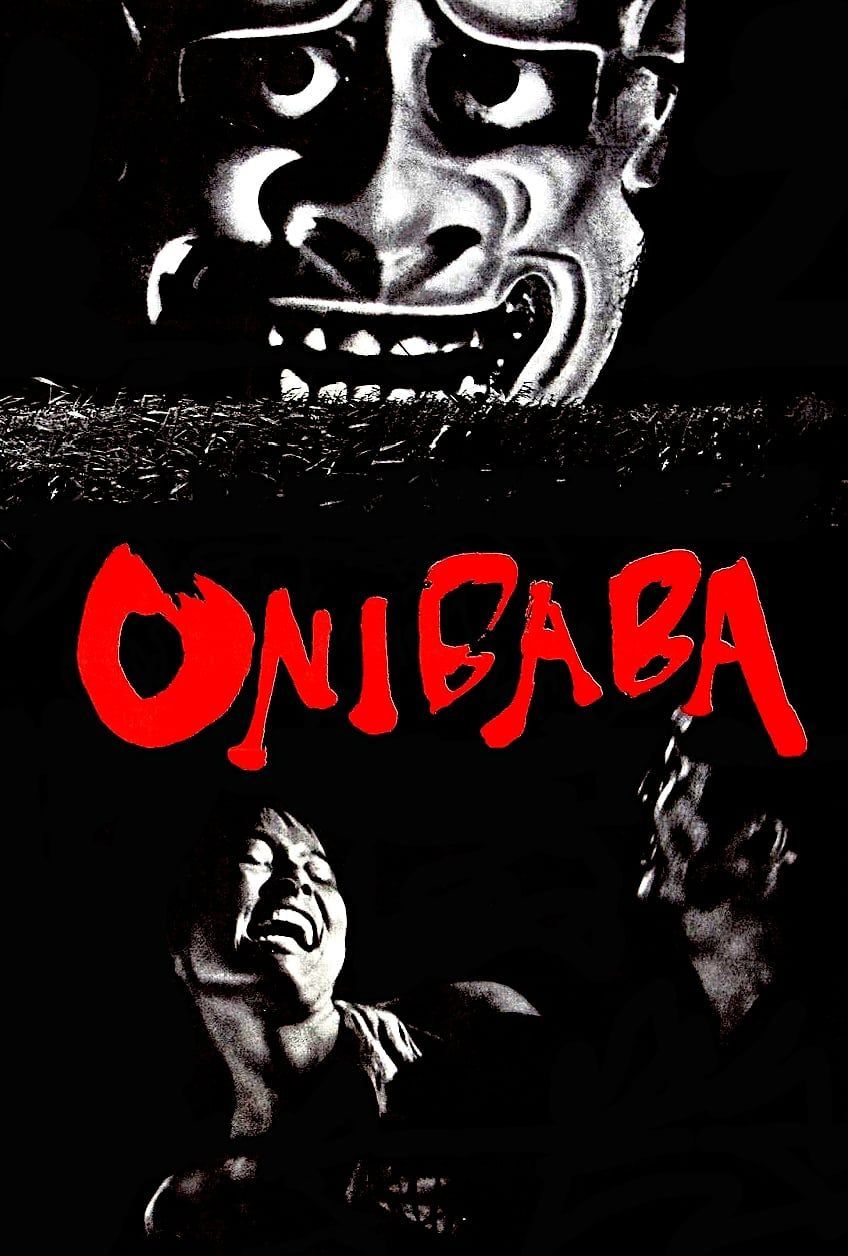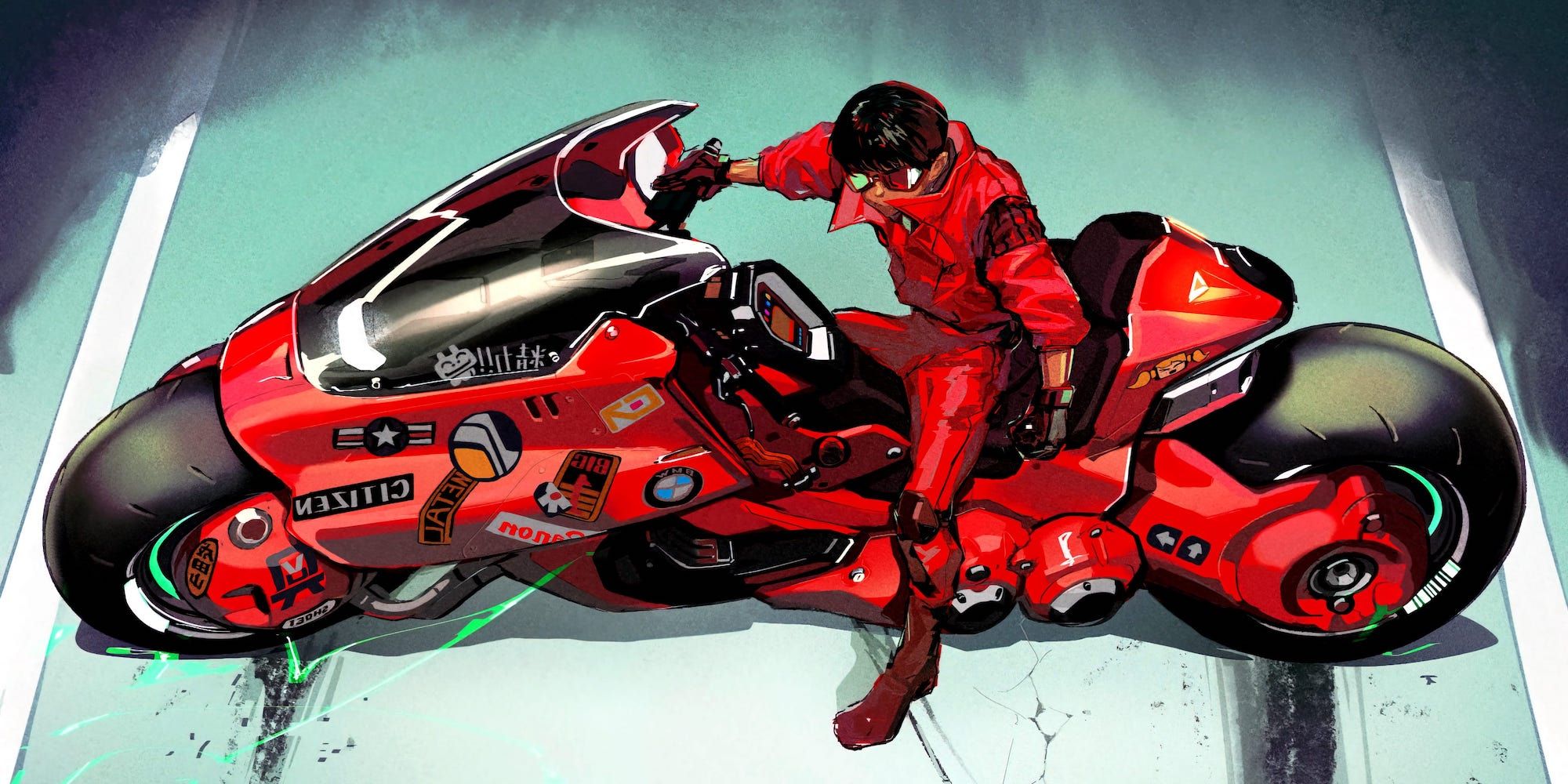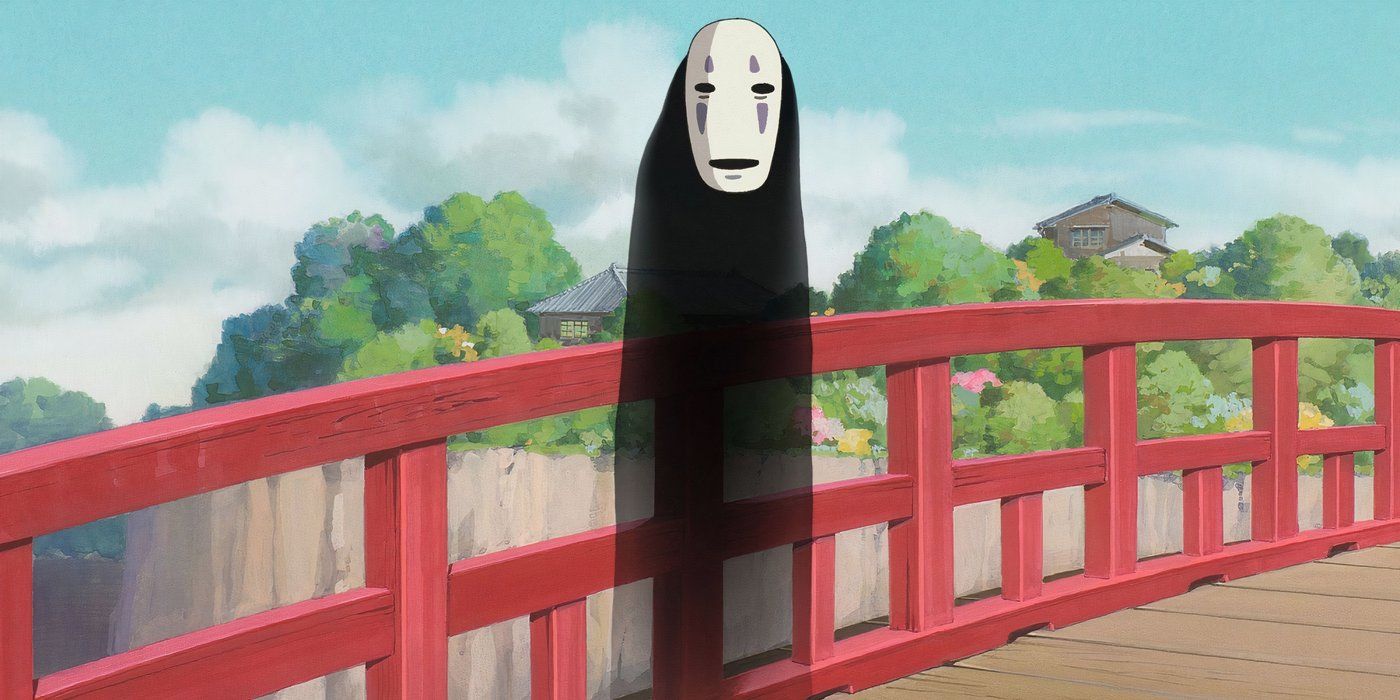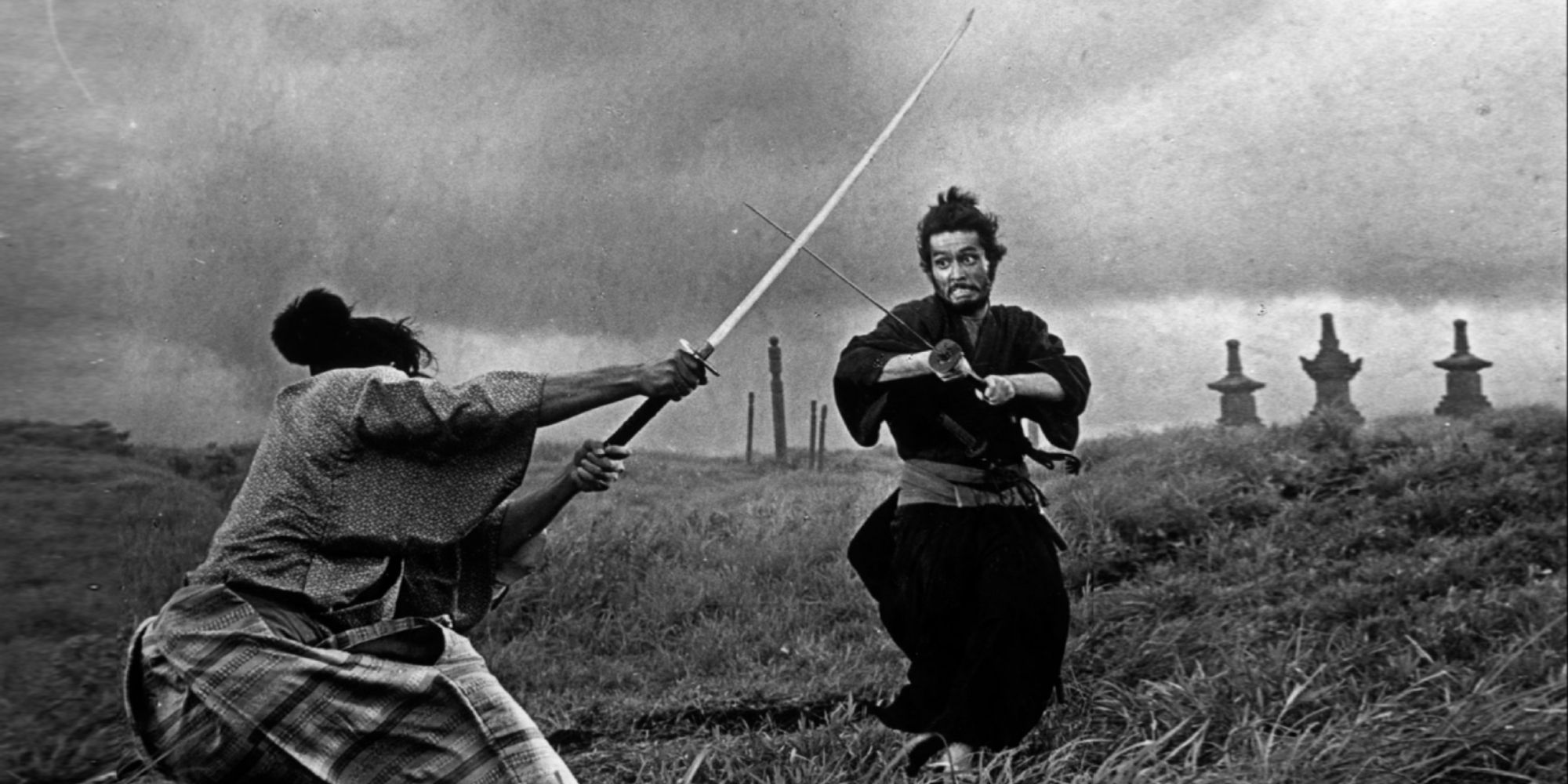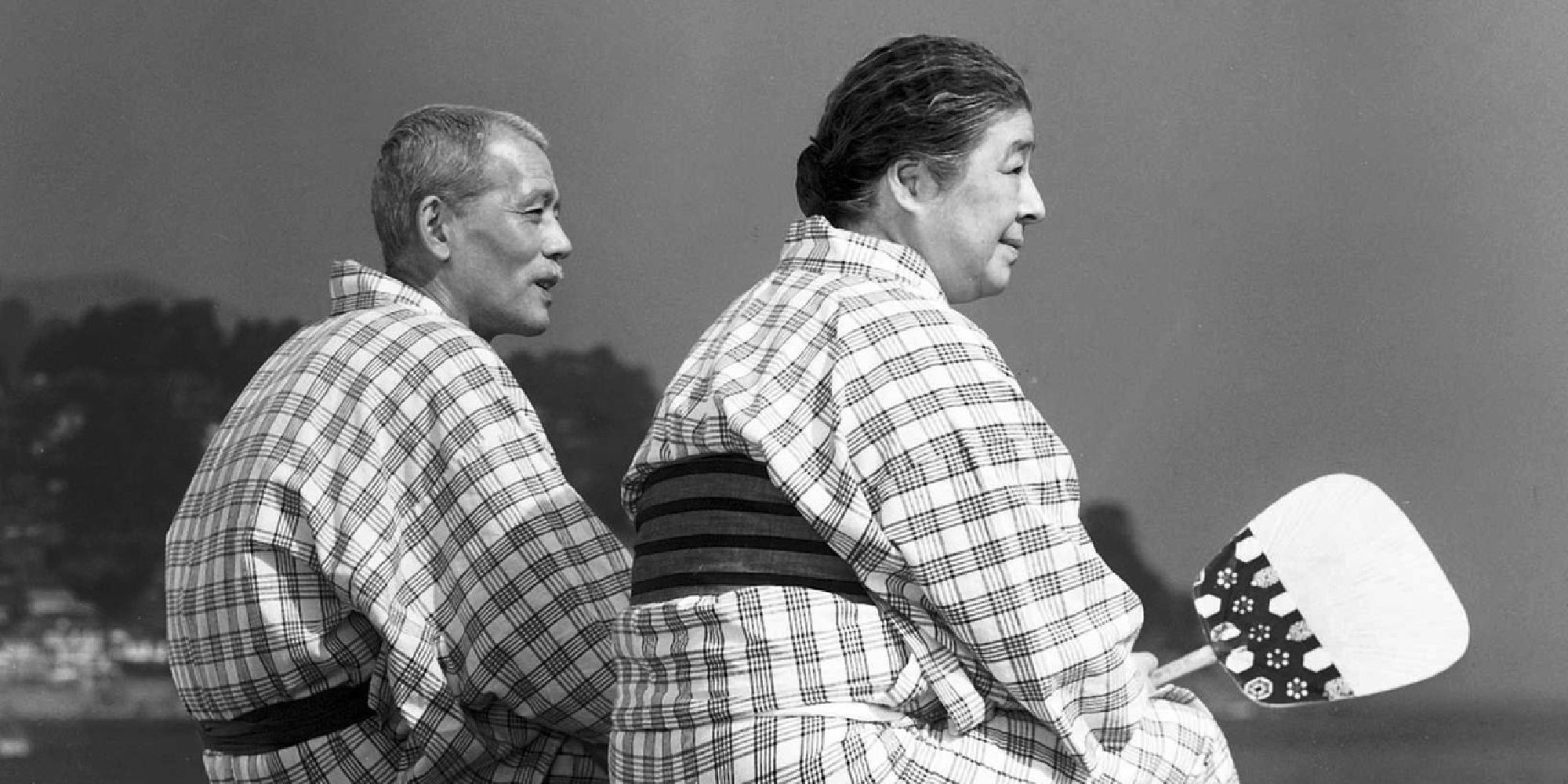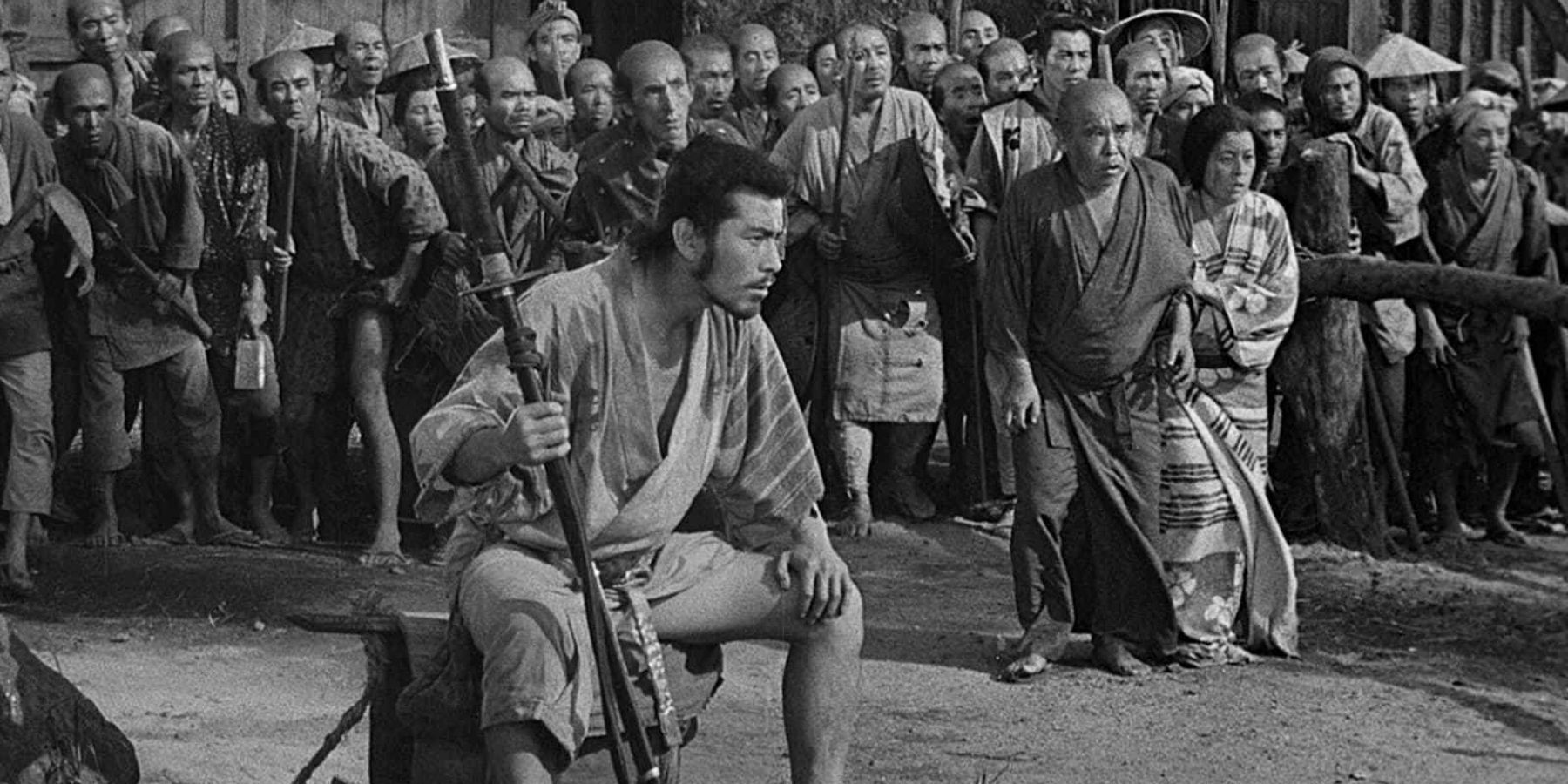10 Japanese Movies That You Must Watch at Least Once
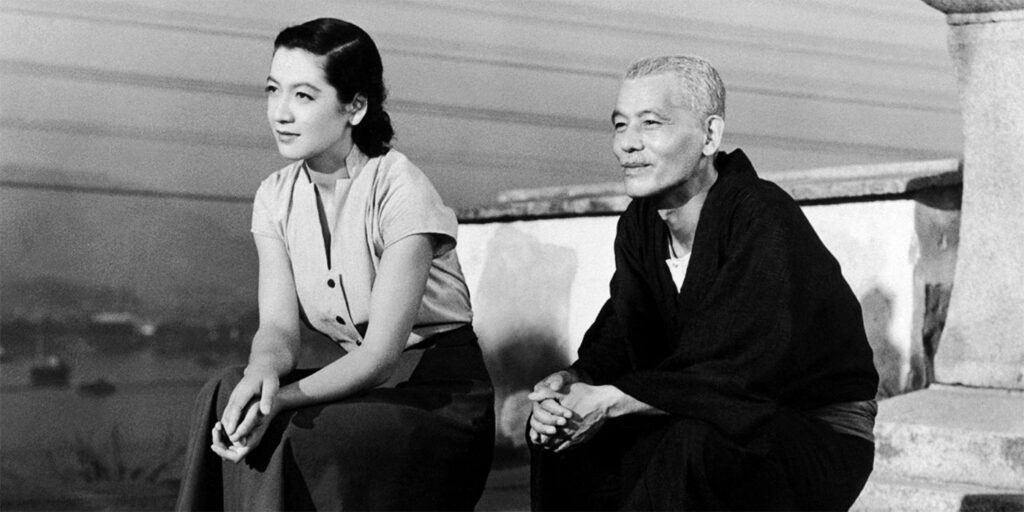
Japanese cinema is a rich landscape consisting of movies that follow trends and challenge the status quo, those that depict life as it is and others that make it a lot more complicated for their protagonists. Some of the most original premises can be found in the vast selection of Japanese cinema, and everyone who is a fan finds their groove in one of the genres.
The Japanese movies that you must watch at least once encapsulate classic representations of this country’s intriguing cinematic world. They showcase Japan’s class differences, comedy styles, metaphors for the world around them, and creativity in storytelling, leaving an indelible mark on world cinema. While this list could be longer than ten entries, these are the essential Japanese movies that you must see at least once to understand and embrace the beautiful and weird world of the Land of the Rising Sun.
10
‘Godzilla’ (1954)
Directed by Ishirô Honda
One of the first major films to grace the screens of Japan’s cinemas was Godzilla, the originator of the ever-inspired kaiju genre. One of the first big monsters on the silver screen was a painful metaphor for the nuclear fallout and aftermath of World War II that struck Japan after the Hiroshima and Nagasaki bombings. Godzilla is more than an old movie about a big lizard terrorizing a city — its social commentary is infused in how people react to the monster, their priorities, and the monster’s rampage that destroys everything in front of it.
Godzilla is about a giant sea monster awakened because of Japan’s nuclear testing. The monster heads straight toward Tokyo, delivering devastation and terror. Meanwhile, the scientists that perform the tests try to find a way to stop Godzilla, grappling with the ethical consequences of their experiments and solutions. Godzilla is a beautiful and exciting mix of horror, sci-fi, and drama, and it includes groundbreaking special effects, which helped it become a worldwide cinema wonder.
9
‘Battles Without Honor and Humanity’ (1973)
Directed by Kinji Fukasaku
Battles Without Honor and Humanity was initially a series of newspaper articles written by journalist Kōichi Iiboshi; he adapted the articles from the memoirs of a real-life yakuza, Kōzō Minō, who was active in the Hiroshima prefecture. The movie adaptation was turned into a series of five movies, originally, and then director Kinji Fukasaku added three more. Several remakes and adaptations were later made by different directors, but, of course, the original Battles is the best and most faithful adaptation of material that was as interesting as it was brutal.
Battles Without Honor and Humanity follows the members of the Hiroshima yakuza families, with Hirono Shozo (Bunta Sugawara) coming back from war and finding his way around Hiroshima on the streets. After he gets adopted into a yakuza family, he becomes the connecting figure of the five movies. Battles Without Honor and Humanity was filmed in a very naturalistic, almost documentary-like style; the violence is brutal and unending, and betrayal is at every step. This movie popularized the yakuza genre, which was later maintained mostly by Takeshi Kitano, among other directors.
8
‘Tampopo’ (1985)
Directed by Juzo Itami
Bet you never thought you’d hear the phrase “ramen Western.” Well, Tampopo is technically a ramen Western, though it’s more of a parody of the genre’s conventions. Tampopo is one of Japan’s essential comedies that showcases the symbolism of food and its importance in Japanese society. Director Juzo Itami was inspired by the “lone hero” trope that’s typically used in Westerns but depicts a wholly different story than one would expect in this context. The meticulously crafted main storyline about searching for the perfect noodle is completed with some side imagery that explores human nature and the absurd.
Tampopo follows the truck driver Gorō (Tsutomu Yamazaki), stumbling upon Tampopo’s (Nobuko Miyamoto) failing noodle shop, Lai Lai. Gorō gives her advice on how to improve the noodles, and the story develops as he and Tampopo, together with other fleeting participants, search for the perfect noodle. The side imagery mentioned is also related to food and its versatility in human life, circling the theme. Roger Ebert loved Tampopo and wrote that “director Juzo Itami creates a scene that makes noodles in this movie more interesting than sex and violence in many another.”
7
‘Departures’ (2008)
Directed by Yōjirō Takita
A beautiful and haunting movie like Departures deserves to be watched at least once; it’s essential to understanding the Japanese character and tradition. Departures won the Best Foreign Film Oscar in 2009, but even without such recognition, it could and should be considered canon in Japanese cinema. Director Yōjirō Takita became intrigued by the ritualistic mortician practice called nōkanshi, a ritual performed on a dead body to send it off to death. Since death is a taboo topic in many Asian cultures, including Japanese, Departures was a surprise hit that got the locals interested in nōkanshi.
Departures follows the successful cellist Daigo Kobayashi (Masahiro Motoki), whose orchestra in Tokyo gets disbanded. When he loses his job, Daigo and his wife decide to move back to Daigo’s hometown, Yamagata. He looks for work there and answers an ad that says it’s about “assisting departures.” Those departures, though, refer to death, and Daigo becomes a mortician, which he hides from his wife and is ashamed of at first. The prevalent theme is death, but others include fear, love, and rediscovering a life’s purpose.
6
‘Onibaba’ (1964)
Directed by Kaneto Shindō
Many people think of horror when they think of Japanese movies, and it makes total sense. Japanese cinema has reinvented horror in a way that not many filmmakers can replicate; the eerie stories that are often rooted in folklore and tradition are the scariest kinds of horror, and Japan has had those since the 1960s. Onibaba is a visually striking psychological horror movie, blending history and folklore with an exploration of modern themes like war and survival. Another prevalent theme is the female desire, often represented and depicted in Japanese mythology.
Onibaba is set sometime in the 14th century, after the famous battle of Minatogawa, and somewhere near Kyoto. A woman and her daughter-in-law hide in the reeds where weary soldiers stay to rest, killing the soldiers and looting them, taking their armor and weapons. They take the stolen goods and exchange them for food. When, one day, a soldier comes along with a Hannya mask (a mask representing a jealous female demon), the mother-in-law steals the mask, and her jealousy, ambition, and envy begin to come out slowly. Onibaba is a masterpiece of horror and one of the most important Japanese movies.
5
‘Akira’ (1988)
Directed by Katsuhiro Otomo
Ah, Akira, the anime masterpiece that made adults in the West agree animation can be full of symbolism, have a striking story, and look kick-ass. Though cyberpunk was first kind of introduced by Blade Runner in 1982, Akira set the standard for the aesthetic, later influencing various movies in the sci-fi genre. Akira is a dystopian sci-fi movie dealing with themes of war, youth alienation, and the fallout of having power in a world without equal distribution of it. When it comes into the wrong hands, it’s not just about the person wielding it but about the response of everyone else to it.
Set in a futuristic Neo-Tokyo, Akira follows the aftermath of World War III caused by a sudden destruction of Tokyo decades prior. The city is riddled with anti-government protesters, terrorists, and organized violence, and gangs are prevalent. When one member of a biker gang, Tetsuo, receives immense psychic powers, his best friend, Kaneda, rushes to save him before he destroys himself or anything else. Akira refers to a character from the past, a symbolic presence that haunts the entirety of Neo-Tokyo and is a lesson for its future residents. Akira is also an essential anime movie and one of the landmarks of the sci-fi genre.
4
‘Spirited Away’ (2001)
Directed by Hayao Miyazaki
Hayao Miyazaki is a relatable king, but he’s also a genius filmmaker, and when the two come together, beautiful movies are made. The founder of Studio Ghibli employs hand-drawn methods, delivering incredibly original, beautiful, and important movies to cinema. Spirited Away is one of those movies, a masterpiece that became the first non-English animated film to win the Oscar for Best Animated Feature, putting Studio Ghibli on the map of global cinematic influences.
Spirited Away follows Chihiro, who moves with her parents to a new town. When they decide to take a walk around the new neighborhood, they stumble upon the entrance to the ghost world, and Chihiro gets trapped there. She travels the planes of the ghost world in order to get out and save her parents, but many factors prevent her from doing so. This way, Chihiro grows up, showing Spirited Away as a stunning and emotional coming-of-age story. Studio Ghibli movies, in general, are vital for understanding and immersing oneself in Japanese cinema.
3
‘Harakiri’ (1962)
Directed by Masaki Kobayashi
Masaki Kobayashi is an influential Japanese director, and his feature, Harakiri, is among the most influential Japanese movies. These cool, big words definitely mean you should watch this movie at least once if you want to understand the meaning and intention behind the well-known phrase, harakiri. Kobayashi is considered one of the best depictors of Japanese society, especially during the ’50s and ’60s, when critique film was booming. Harakiri critiques and dwells on the samurai code, which was long gone by the ’50s.
Harakiri follows a ronin, a masterless samurai, during the 1600s in Edo (ancient Tokyo). His name is Hanshiro (Tatsuya Nakadai), and he visits the Iyi Clan, requesting permission to commit seppuku in their courtyard. When they tell Hashiro about another samurai from his clan with the same intentions, their integrity and Hashiro’s intentions become shaken. In many ways, Harakiri names the ritualistic suicide process cruel and hypocritical; something that’s meant to be about honor and code turns out to be a tool for the powerful over the weak. Kobayashi himself mentioned he always enjoyed making stories that challenge authority; if you enjoy watching them, Hakari is the perfect movie for you.

- Runtime
-
133 Minutes
- Director
-
Masaki Kobayashi
- Writers
-
Yasuhiko Takiguchi, Shinobu Hashimoto
2
‘Tokyo Story’ (1953)
Directed by Yasujirō Ozu
Another great influence on Japanese cinema is Yasujirō Ozu, the master of depicting life on the big screen. The most common themes in his movies were family and relationships between different generations. Tokyo Story is his biggest and most influential movie, and it’s a beautiful and poignant reflection on several generations of a family facing modernity and marrying the old with the new. Tokyo Story is often considered the greatest film of all time by various directors, actors, and filmmakers in general. Ozu seemingly invented and reinvented many filming methods, providing inspiration to numerous directors later in life.
Tokyo Story follows the elderly couple Shūkichi and Tomi (Chishū Ryū and Chieko Higashiyama) visiting one of their five children in Tokyo, their eldest son, Koichi. He lives with his wife and two kids, who don’t acknowledge the arrival or existence of their grandparents. Tokyo Story is one of the best depictions of the Westernization of Japan post-WWII; the emotional and slow-paced story shows how the typical Japanese lifestyle gave in to modernization. If you want to experience Japan’s biggest recent transformation, Tokyo Story will tell the tale with beauty and grace.
1
‘Seven Samurai’ (1954)
Directed by Akira Kurosawa
Akira Kurosawa directed 33 movies and wrote 83 of them, emphasized reading and books as the biggest inspiration for writing and creativity, and covered all sorts of topics in his films, from romance and drama to violence and action. However, his most famous movie is surely Seven Samurai, a masterpiece of samurai cinema that’s as exciting as it is devastating. This legendary movie helped define action ensembles, becoming one of the first movies to include an “assembling the team” trope. And to think, maybe we wouldn’t have Ocean’s Eleven or Kung Fu Panda without this influence today.
Seven Samurai is set in the 16th century and follows residents of a small village who are constantly raided and robbed by known bandits in the area. The village elder, Gisaku, agrees to hire a ronin to defend the village; they encounter Kambei (Takashi Shimura), who later gathers six other warriors with different skills to help him defend the villagers. One of them is the temperamental vagrant Kikuchiyo, played by the inimitable Toshirō Mifune. The movie directly inspired various Westerns, too, especially the work of Clint Eastwood.

